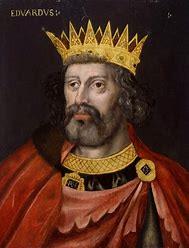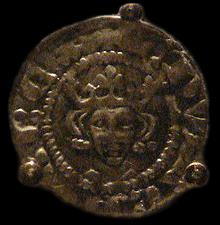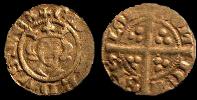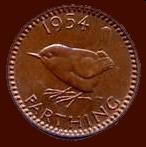








Designed by Nigel G Wilcox






The Paragon Of Metal Detecting
Powered By Sispro1
Farthing
British Sterling Currency - Numismatics,
Farthing
For Reference ONLY
Everything For The Detectorist
Edward I Farthing 1272-1307 AD
It was long considered that the first silver farthings were produced in the reign of King Edward I (1272-1307). However in recent years five examples have been discovered dating from the reign of King Henry III (1216-1272). All are in the short-cross style of that period, produced between 1216 and 1247, and are similar in design to the pennies, but only a quarter the size. Due to the lack of known examples and documentary evidence, these coins are thought to be trials rather than circulating coins. The production of farthings was authorised by the Patent Rolls of 1222, but actual examples have only recently been discovered. The obverse shows a bust of the king holding a sceptre , with the inscription HENRICUS REX, while the reverse shows a small cross with three pellets in each quarter with the moneyer's inscription TERRI (or ILGER or (?)ADAM) ON LUND - Terry (or Ilger or Adam) of London - only two examples of Terri's and Ilger's work have been discovered, and the identification of Adam is uncertain because only part of his coin has survived.
Contemporary records show that over four million farthings were produced during the reign of King Edward I , (1272-1307), but comparatively few have survived. By far the most prolific mint was London, identified on the reverse of the coin by LONDONIENSIS or CIVITAS LONDON or very rarely LONDRIENSIS, but they were also produced at Berwick (VILLA BEREVVICI), Bristol (VILLA BRISTOLLIE), Lincoln (CIVITAS LINCOL), Newcastle (NOVICASTRI), and York (CIVITAS EBORACI), but most of the provincial mints' output is rare today. The weight and fineness of Edwards' farthings varies - the first three issues from the London mint weigh 6.85 grains / 0.44 grams, while the later issues weigh 5.5 grains / 0.36 grams, but the value of the coins remained the same as the heavier coins had a lower fineness or silver content than the lighter coins; it is thought that the coins were made larger in order to make them easier to strike and handle, but coins of low fineness have never been popular in England and the population preferred the inconvenience of a smaller coin with higher silver content. Edward's farthings were of the long cross type reverse, and the usual legend on the obverse was EDWARDUS REX (King Edward), or occasionally E R (Edward King of England Lord (of Ireland)).
Only two mints, London and Berwick, produced farthings in the reign of K(1307-1327), and their output is classed as "rare" and "very rare" respectively. They are very similar to the coins of his father, and in fact the combination of their rarity and poor condition means that there has not been much research done into the farthings of this reign, although it does seem that for much of the reign farthings of Edward I continued to be produced occasionally.
It was long considered that the first silver farthings were produced in the reign of King Edward I (1272-1307). However in recent years five examples have been discovered dating from the reign of King Henry III (1216-1272). All are in the short-cross style of that period, produced between 1216 and 1247, and are similar in design to the pennies, but only a quarter the size. Due to the lack of known examples and documentary evidence, these coins are thought to be trials rather than circulating coins. The production of farthings was authorised by the Patent Rolls of 1222, but actual examples have only recently been discovered. The obverse shows a bust of the king holding a sceptre , with the inscription HENRICUS REX, while the reverse shows a small cross with three pellets in each quarter with the moneyer's inscription TERRI (or ILGER or (?)ADAM) ON LUND - Terry (or Ilger or Adam) of London - only two examples of Terri's and Ilger's work have been discovered, and the identification of Adam is uncertain because only part of his coin has survived.
Contemporary records show that over four million farthings were produced during the reign of King Edward I , (1272-1307), but comparatively few have survived. By far the most prolific mint was London, identified on the reverse of the coin by LONDONIENSIS or CIVITAS LONDON or very rarely LONDRIENSIS, but they were also produced at Berwick (VILLA BEREVVICI), Bristol (VILLA BRISTOLLIE), Lincoln (CIVITAS LINCOL), Newcastle (NOVICASTRI), and York (CIVITAS EBORACI), but most of the provincial mints' output is rare today. The weight and fineness of Edwards' farthings varies - the first three issues from the London mint weigh 6.85 grains / 0.44 grams, while the later issues weigh 5.5 grains / 0.36 grams, but the value of the coins remained the same as the heavier coins had a lower fineness or silver content than the lighter coins; it is thought that the coins were made larger in order to make them easier to strike and handle, but coins of low fineness have never been popular in England and the population preferred the inconvenience of a smaller coin with higher silver content. Edward's farthings were of the long cross type reverse, and the usual legend on the obverse was EDWARDUS REX (King Edward), or occasionally E R (Edward King of England Lord (of Ireland)).
Only two mints, London and Berwick, produced farthings in the reign of K(1307-1327), and their output is classed as "rare" and "very rare" respectively. They are very similar to the coins of his father, and in fact the combination of their rarity and poor condition means that there has not been much research done into the farthings of this reign, although it does seem that for much of the reign farthings of Edward I continued to be produced occasionally.
Royal Monarchy
Copyright © All Rights Reserved by Nigel G Wilcox · · E-Mail: ngwilcox100@gmail.com
INFORMATION - DATA
6. S. Menu
Pages

Edward I
We do NOT buy or sell coins


Main Coin Menu

VIEW ALL MENUS
Member NCMD
























